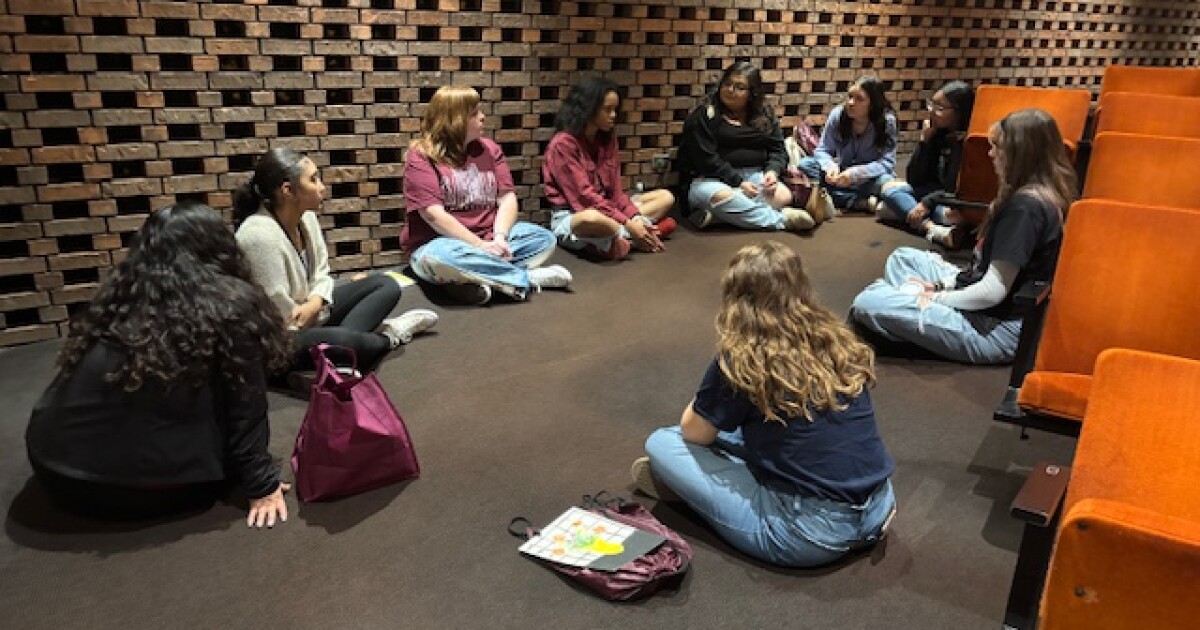Report on a Collaborative Educational Initiative and its Contribution to Sustainable Development Goals
Executive Summary
The Cactus Jack Foundation, in partnership with Space Center Houston, has initiated a program for students within the Houston Independent School District. This initiative is designed to provide a curriculum enriched with Science, Technology, Engineering, and Mathematics (STEM), directly contributing to several United Nations Sustainable Development Goals (SDGs), most notably SDG 4 (Quality Education), SDG 10 (Reduced Inequalities), and SDG 17 (Partnerships for the Goals).
Program Overview and Alignment with SDG 4: Quality Education
The core objective of the program is to equip students with relevant technical and vocational skills for future employment and entrepreneurship, a key target of SDG 4. The initiative provides a platform for students to acquire knowledge and skills necessary to promote sustainable development.
Key Educational Objectives
- To provide students with the necessary skills to pursue careers in engineering, design, and exploration.
- To facilitate hands-on learning through virtual and in-person workshops at the Cact.Us Design Center TXRX Labs.
- To foster collaboration between students and industry professionals, including NASA engineers.
Integration of Specific Sustainable Development Goals in Curriculum
The program’s curriculum is structured around analyzing and proposing solutions for real-world challenges, directly embedding the principles of several SDGs.
Curriculum Focus Areas and Corresponding SDGs
- Water Scarcity: This module directly addresses challenges related to SDG 6 (Clean Water and Sanitation), encouraging students to innovate for sustainable water management.
- Power Generation: This area of study aligns with SDG 7 (Affordable and Clean Energy), tasking students with exploring sustainable energy solutions.
- Space Habitation: This topic promotes innovation in sustainable living environments, linking to SDG 9 (Industry, Innovation, and Infrastructure) and SDG 11 (Sustainable Cities and Communities).
Foundation Mission and Contribution to SDG 10: Reduced Inequalities
The Cactus Jack Foundation, established in November 2020, operates on a mission that strongly supports SDG 10 by aiming to reduce inequalities in educational access.
Core Mission Statement
- The foundation is committed to extending educational opportunities to all youth, regardless of their circumstances, to help them achieve their lifetime goals and dreams.
- This commitment directly targets the reduction of inequalities by ensuring that underserved students have access to high-quality STEM education and career pathways.
Partnerships for the Goals (SDG 17)
This initiative serves as a model for SDG 17, demonstrating a multi-stakeholder partnership between a non-profit organization (Cactus Jack Foundation), a scientific and educational institution (Space Center Houston), and a government agency (NASA). This collaboration leverages combined resources to enhance educational outcomes and promote sustainable development. The program will conclude with a presentation of student-engineered designs, co-hosted by founder Travis Scott and other industry professionals, further strengthening the link between education and industry.
1. Which SDGs are addressed or connected to the issues highlighted in the article?
-
SDG 4: Quality Education
- The article’s primary focus is on a new educational initiative by the Cactus Jack Foundation. The program provides a “science, technology, engineering, and mathematics (STEM)-enriched curriculum” for students, directly aligning with the goal of ensuring inclusive and equitable quality education.
-
SDG 10: Reduced Inequalities
- The foundation’s mission statement, as quoted in the article, is to “extend educational opportunities to all, regardless of their circumstances, to achieve their dreams.” This commitment to providing access to education for all youth, particularly those in the Houston Independent School District, addresses the goal of reducing inequalities within and among countries.
-
SDG 17: Partnerships for the Goals
- The initiative is a collaborative effort involving multiple organizations. The article states that the Cactus Jack Foundation (a non-profit) launched the program with Space Center Houston and that students will “collaborate with NASA engineers.” This multi-stakeholder partnership is a core component of SDG 17, which aims to strengthen the means of implementation and revitalize the global partnership for sustainable development.
2. What specific targets under those SDGs can be identified based on the article’s content?
-
Target 4.4: Relevant skills for employment
- This target aims to “substantially increase the number of youth and adults who have relevant skills, including technical and vocational skills, for employment, decent jobs and entrepreneurship.” The article directly supports this by stating the program will “teach students the necessary skills to pursue careers in engineering, design, and exploration” and focuses on skills like “design sketching, modeling, systems thinking, and fabrication.”
-
Target 10.2: Promote social and economic inclusion
- This target seeks to “empower and promote the social, economic and political inclusion of all, irrespective of…economic or other status.” The foundation’s mission to provide educational opportunities “regardless of their circumstances” directly aligns with this target by working to ensure that students from a public school district have access to high-quality STEM education and career pathways, promoting their future economic inclusion.
-
Target 17.17: Encourage effective partnerships
- This target is to “Encourage and promote effective public, public-private and civil society partnerships.” The program described in the article is a clear example of such a partnership, bringing together a civil society organization (Cactus Jack Foundation), a public-private entity (Space Center Houston), and a government agency (NASA) to achieve a common educational goal.
3. Are there any indicators mentioned or implied in the article that can be used to measure progress towards the identified targets?
-
Indicator for Target 4.4
- An implied indicator is the number of students from the Houston Independent School District participating in the STEM program. The article mentions that students will engage in the curriculum and present their designs, which suggests that tracking participation and project completion would be a direct measure of the program’s reach in providing relevant skills.
-
Indicator for Target 10.2
- The key indicator here is the provision of the program to students “regardless of their circumstances.” While not a quantitative metric in the article, the program’s existence and its stated mission to serve a diverse public school district serve as a qualitative indicator of action being taken to promote educational inclusion.
-
Indicator for Target 17.17
- The indicator is the existence and operationalization of the partnership itself. The article explicitly names the partners—Cactus Jack Foundation, Space Center Houston, and NASA engineers—and describes their collaborative activities, such as co-hosting events and working with students. This collaboration is a direct measure of a functioning multi-stakeholder partnership.
4. SDGs, Targets, and Indicators Table
| SDGs | Targets | Indicators |
|---|---|---|
| SDG 4: Quality Education | Target 4.4: By 2030, substantially increase the number of youth and adults who have relevant skills, including technical and vocational skills, for employment, decent jobs and entrepreneurship. | The number of Houston Independent School District students participating in the STEM-enriched curriculum and developing skills in engineering, design, and fabrication. |
| SDG 10: Reduced Inequalities | Target 10.2: By 2030, empower and promote the social, economic and political inclusion of all, irrespective of age, sex, disability, race, ethnicity, origin, religion or economic or other status. | The provision of educational opportunities to students “regardless of their circumstances,” as stated in the foundation’s mission. |
| SDG 17: Partnerships for the Goals | Target 17.17: Encourage and promote effective public, public-private and civil society partnerships, building on the experience and resourcing strategies of partnerships. | The established collaborative program between the Cactus Jack Foundation (non-profit), Space Center Houston, and NASA engineers (government agency). |
Source: peopleofcolorintech.com







